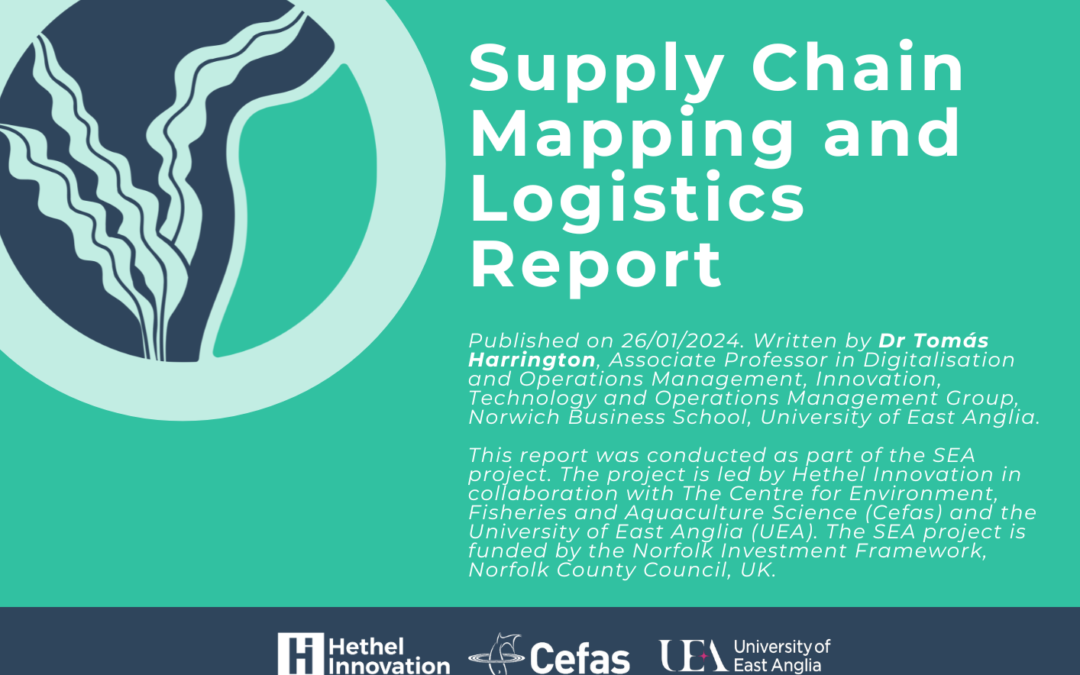Published on 26/01/2024. Written by Dr Tomás Harrington, Associate Professor in Digitalisation and Operations Management, Innovation, Technology and Operations Management Group, Norwich Business School, University of East Anglia.
This report was conducted as part of the SEA project. The project is led by Hethel Innovation in collaboration with The Centre for Environment, Fisheries and Aquaculture Science (Cefas) and the University of East Anglia (UEA). The SEA project is funded by the Norfolk Investment Framework, Norfolk County Council, UK.
The link to the PDF version of the report can be found here.
Executive Summary
- Industrial system maps can capture a diversity of enterprises operating at different (and multiple)
points within a value chain (in the case of the SEA project: covering onshore seaweed nurseries,
offshore farming, harvest and first-stage processing, through to final seaweed-based products) - Representing a sector in this manner can enable emerging actors/enterprises to demonstrate
their ‘value’ to the rest of the ecosystem and provide insights for effective supply network design
(i.e., in identifying stakeholder groups, gaps and opportunities) - Early-stage firms are less resilient and require local/regional institutional support – there are
lessons to be learnt on where geography has played a role in terms of industrial institutions (e.g.
maritime cluster development) or governments playing early adopter roles - Multi-stakeholder approaches are critical in engaging the major stakeholder groups – industrial
actors, institutional and consumers – as well as capturing individual requirements of each
stakeholder group, overlaps can highlight common (and often unseen) areas of interest
This work has been possible thanks to the Norfolk Investment Framework, Norfolk County Council.


